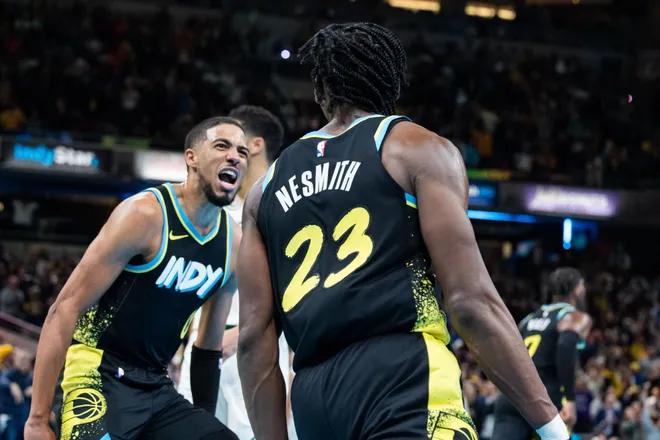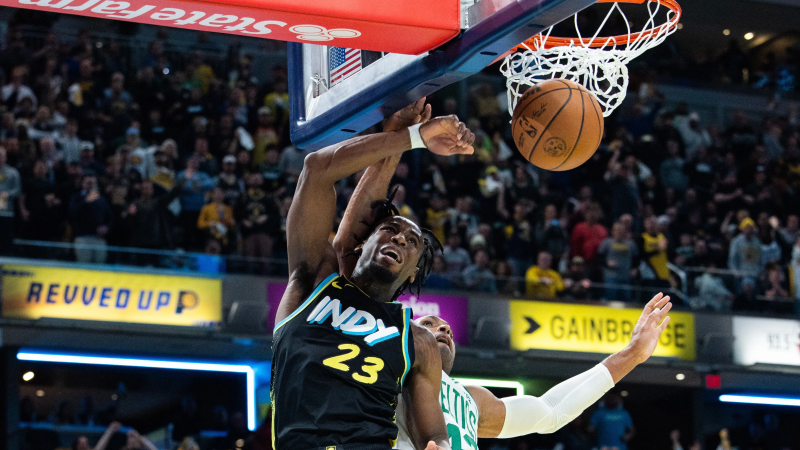NBA In-Season Tournament an early success with room for greater potential with tweaks
If anyone paid attention to NBA executives discussing the In-Season Tournament, one word kept popping up.
Tweak.
League officials understand the need to tinker with the format of the IST as they watched it unfold its inaugural season.
As the NBA begins the quarterfinals of the IST (two more quarterfinals games Tuesday night), there is no doubt the IST created excitement and interest in games at a point of the season where college and pro football dominate the conversation.
It also created unfortunate and awkward moments that require resolution, such as the Boston Celtics needing to beat the Chicago Bulls by more than 22 points on the final day of group play to win their group based on the point-differential tiebreaker.
STAY UP-TO-DATE: Subscribe to our Sports newsletter for exclusive content
Bulls coach Billy Donovan wasn’t thrilled the Celtics tried to run up the score, including going to Hack-a-Drummond in the game’s final minutes with the outcome secure but Boston needing to ensure a margin of victory that sent it to the quarterfinals. Celtics coach Mazzulla wasn’t thrilled he had to resort to those tactics.
But Donovan’s gripe wasn’t with Mazzulla. It was with the NBA, which wants teams and players to embrace the IST and build it into one the league’s tentpole events.
The point-differential tiebreaker also created a situation in the Golden State-Sacramento game where the Warriors, who needed to win by at least 12 points to advance from group play, could’ve settled for overtime instead of trying to win in regulation when they realized late in the fourth quarter of a close game they weren’t going to beat the Kings by 12 or more in four quarters.
The league can avoid those situations. The easiest way is to avoid point-differential as a tiebreaker. Regular-season record from 2022-23 already is a tiebreaker (you could also use current season records, too) so just make that the No. 2 tiebreaker after head-to-head and eliminate point-differential.
That's an easy fix NBA braintrust can implement and still keep interest in the IST.

Because there was interest. Games were competitive, and big-name players came to play. Sixty percent of IST group-play games were decided by 10 points or fewer compared to 54.1% of non-IST games this season, and 30% were decided by five points or fewer, slightly higher than the 28.1% in non-IST games.
The two quarterfinal games Monday with the hint of a playoff atmosphere (Indiana 122, Boston 112 and New Orleans 127, Sacramento 117) were 10-point margins and both were within six points in the final six minutes, including 105-105 with 90 seconds remaining in the Pacers-Celtics game.
In group play, Sacramento’s De’Aaron Fox averaged 36 points, Phoenix’s Kevin Durant 35.7 points, 7.7 assists and 7.3 rebounds, Philadelphia’s Joel Embiid 34 points and 12 rebounds, Dallas’ Luka Doncic 33.8 points, Denver’s Nikola Jokic 32.3 points, 16.3 rebounds and 11 assists, Golden State’s Steph Curry 31.3 points, Oklahoma City’s Shai Gilgeous-Alexander 31 points, Phoenix’s Devin Booker 30.7 points, Milwaukee’s Damian Lillard 30 points and Indiana’s Tyrese Haliburton 28.5 points and 13.5 assists.
Haliburton recorded his first career triple-double in the Pacers’ quarterfinals victory against Boston Monday – 26 points, 13 assists and 10 rebounds. The NBA couldn’t have planned that any better, and after the game, Indiana coach Rick Carlisle said the victory was "so important for our franchise and our city."
Enough players and coaches bought in.
The event resonated with fans. Viewership of IST games on ESPN and TNT were up 26%, viewership up 20% on local TV for those games and NBA League Pass had a 25% increase in IST games vs. last season’s comparable windows.
Also, the NBA had its highest average attendance in November (18,206 fans per game).
All that matters, especially as the league negotiates a new TV deal. More competitive games and more interest means the league can try to sell its package of games at premium price – which impacts revenue for owners and players.
The league sought a way to own a bigger piece of the conversation in November and early December when college and pro football dominate the sporting landscape. The period between opening week and Christmas was stranded in no-man’s land for the NBA, and now the league has a bridge from the start of the season to Christmas to capture fan interest.
Given skepticism that emanated from (some) players, fans, team executives and media, the In-Season Tournament is an early success with room for greater potential.
It’s what the NBA intended to create in year one.

Disclaimer: The copyright of this article belongs to the original author. Reposting this article is solely for the purpose of information dissemination and does not constitute any investment advice. If there is any infringement, please contact us immediately. We will make corrections or deletions as necessary. Thank you.







